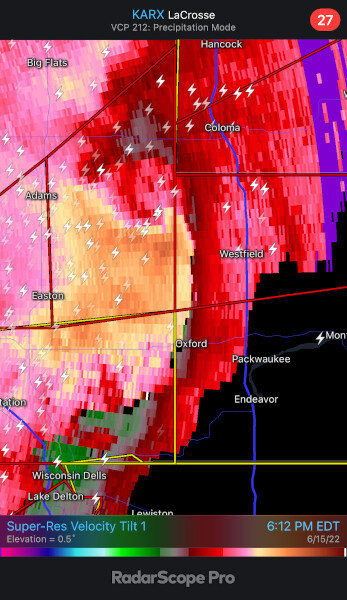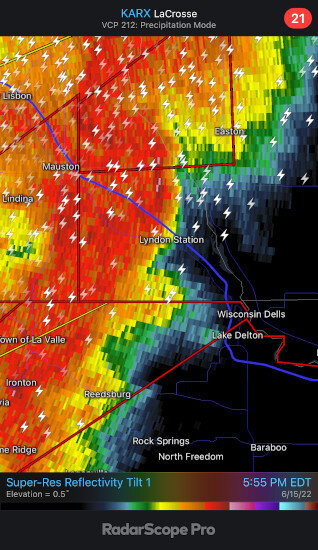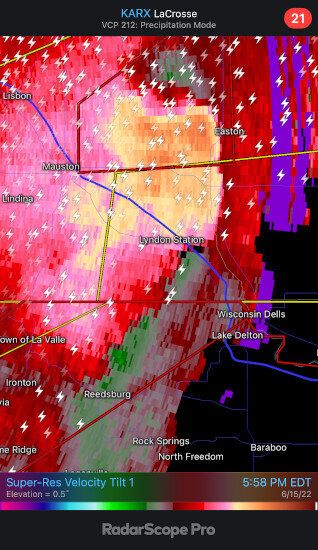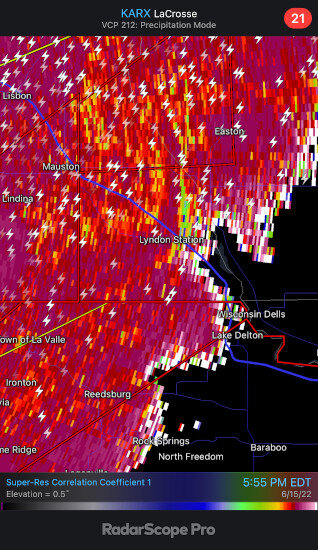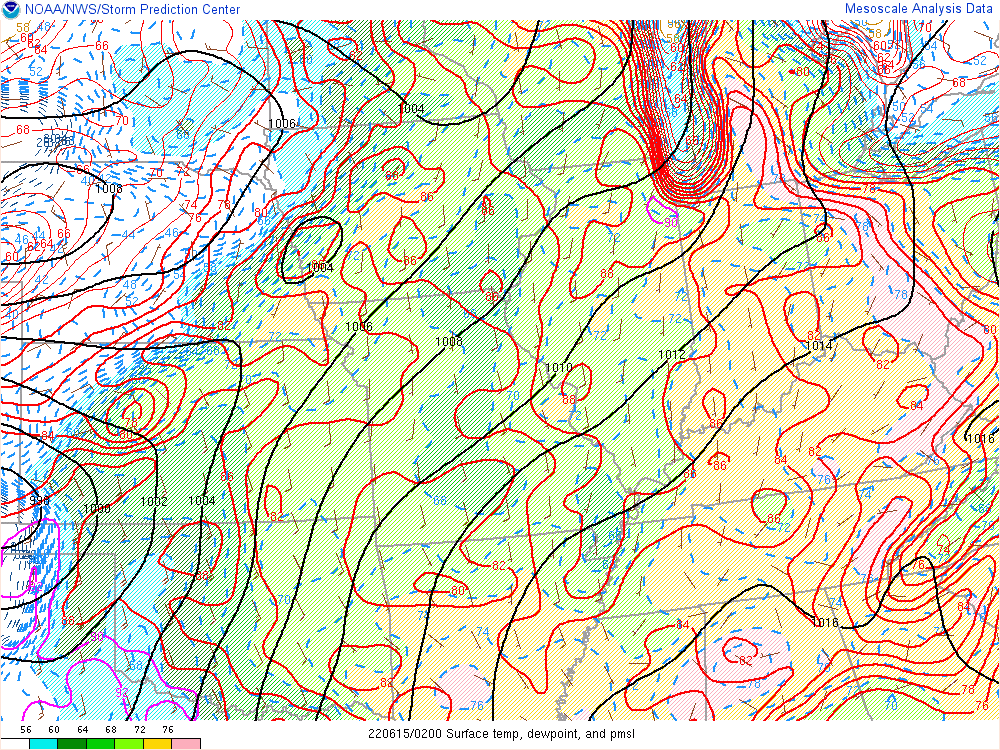-
Posts
2,120 -
Joined
-
Last visited
Content Type
Profiles
Blogs
Forums
American Weather
Media Demo
Store
Gallery
Everything posted by frostfern
-
It hit 95 here late in the day, even with some lake influence. The heat index is lower than last week though as dews are only in the mid 60s.
-
I feel like there has to be an inch or two of rain every single week to keep the grass green here. There's a lot of quartz sand here. It gets hot in the sun and doesn't hold moisture. Watering just seems like a waste. It seems like it's just climatology for sunny lawns to go dormant around late June every year... unless there's an unusually wet period (like there was last year).
-
It is already quite swimmable a lot of places here in the western Lower Peninsula. It depends very much on the wind direction and various local currents though. The swimmable layer is only about 1.5 meters deep, so your feet get cold if you let them drop down. There's definitely an advantage on the east side of Lake Michigan during an early heat wave as southerly winds will cause an onshore current that traps recently generated warmth along the beach. You have to watch out when the wind switches to northerly though as the cold comes up from below almost instantly.
-
It looks like the front goes through dry tonight. Getting browner ever single day now.
-
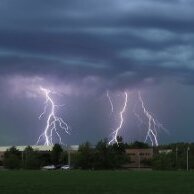
Summer 2022 Medium/Long Range Discussion
frostfern replied to Chicago Storm's topic in Lakes/Ohio Valley
I find this heat + no thunder stuff so boring. -
I was woken up by some fairly close lighting strikes around 3:00 AM last night. I think it was thundering for a full hour but somehow only 0.22" fell. I don't know what happened. Screw zoned.
-
Going into a dry pattern. Ugh.
-

Summer 2022 Medium/Long Range Discussion
frostfern replied to Chicago Storm's topic in Lakes/Ohio Valley
You'll do fine. Wisconsin always gets thunderstorms. It's just Lake Michigan will be killing everything before it reaches this side. Only supercells and massive severe bows get here. The garden variety stuff always shits the bed over the lake. -
It's getting dry on this side of the lake though, as is often the case. MBY missed most of the heavy rain on Monday and the long term isn't looking good at all. Weird thing in Michigan in this kind of pattern is only severe storms are NOT constantly drying out over the lake. In this hot pattern it's hard to get normal old rain without the severe. Hot dry summer incoming. Ugh.
-

2022 Short/Medium Range Severe Weather Discussion
frostfern replied to Chicago Storm's topic in Lakes/Ohio Valley
I should have done it probably. Oh well. -

2022 Short/Medium Range Severe Weather Discussion
frostfern replied to Chicago Storm's topic in Lakes/Ohio Valley
That is a mean looking rear-inflow jet. This one might be even worse than the 2020 Iowa one. Don't know how built up the area is. It's more sparse to the west. -

2022 Short/Medium Range Severe Weather Discussion
frostfern replied to Chicago Storm's topic in Lakes/Ohio Valley
Can someone make a new thread for this event? Move my posts to it? I'm not good at this stuff. -

2022 Short/Medium Range Severe Weather Discussion
frostfern replied to Chicago Storm's topic in Lakes/Ohio Valley
-

2022 Short/Medium Range Severe Weather Discussion
frostfern replied to Chicago Storm's topic in Lakes/Ohio Valley
Looks like a pretty high end straight-line wind event crossed I-90 just north of Lyndon Station. There is even a CC drop on the leading edge of the gust. It definitely did some damage. -

2022 Short/Medium Range Severe Weather Discussion
frostfern replied to Chicago Storm's topic in Lakes/Ohio Valley
It's getting messy now, but there's a major straight-line wind event evolving south of the Union Center circulation. -

2022 Short/Medium Range Severe Weather Discussion
frostfern replied to Chicago Storm's topic in Lakes/Ohio Valley
A fourth meso to the south of the others is now tornado warned too. -

2022 Short/Medium Range Severe Weather Discussion
frostfern replied to Chicago Storm's topic in Lakes/Ohio Valley
The middle one looked to be in the high EF-2 / low EF-3 range for a good stretch after crossing the highway. Probably not photogenic though as there was very heavy rain wrapping around on all sides. -

2022 Short/Medium Range Severe Weather Discussion
frostfern replied to Chicago Storm's topic in Lakes/Ohio Valley
Nasty rain-wrapped tornadoes. -

Summer 2022 Medium/Long Range Discussion
frostfern replied to Chicago Storm's topic in Lakes/Ohio Valley
Boo. -

2022 Short/Medium Range Severe Weather Discussion
frostfern replied to Chicago Storm's topic in Lakes/Ohio Valley
I think it will be one of those broken lines where everyone gets outflow gusts but not everyone gets rain. -
They dewpoint is down from around hanging around 80 all evening yesterday to dry crispy 72 this morning.
-
That band of pooled 76-80 dewpoints along the warm front has been rather stagnant. There's been a real soup-zone wedged between the warm/stationary front to the NE and lake marine layer to the west. 14 21:53 SE 10 10.00 Fair CLR 84 78 82% NA 95 29.84 1009.9 14 20:53 SE 10 10.00 A Few Clouds FEW045 86 78 77% NA 98 29.84 1010.0 14 19:53 SE 13 10.00 Partly Cloudy FEW045 SCT250 88 78 90 83 73% NA 102 29.83 1009.6 14 18:53 E 10 10.00 Partly Cloudy FEW040 SCT250 90 79 70% NA 106 29.84 1009.8 14 17:53 E 12 10.00 Partly Cloudy FEW030 SCT250 90 79 70% NA 106 29.85 1010.2 14 16:53 E 13 10.00 A Few Clouds FEW030 89 78 70% NA 103 29.87 1010.8 14 15:53 E 12 10.00 A Few Clouds FEW030 88 77 70% NA 100 29.88 1011.2 14 14:53 SE 10 10.00 A Few Clouds FEW030 86 76 72% NA 96 29.89 1011.4 Kind of looking forward to a toastier heat tomorrow honestly. Just tired of getting soaking wet with perspiration every time I move outside. It just makes me feel so gross. I get the feeling whatever rain and storms try to move SE tomorrow evening will be shitting the bed right on my doorstep, but the outflow breeze SHOULD get here.
-
I remember a few 78 dewpoint days in July in the 2000s. Also a few muggy days with upper 70s dewpoints the past couple years. I just don't really remember it happening before June 15 IMBY. The 1995 heatwave was extremely humid here with a peak dewpoint around 81 or 82 and temperatures in the upper 90s, but that was mid July.
-
90/79 feels worse than 100/65 to me. The soup just makes me feel suffocated. Don't know how the heat index would compare even.
-
Yea. It just feels like there's quite a big difference between 72 and 79. Even between 75 and 79 honestly. The dewpoint is currently 79 and it's been sitting there for over three hours now. It's been 75 or higher all afternoon. Hope it goes down tonight. The air quality is just oppressive right now. There's a lot of pollen too, and ozone, and particulate pollution.



